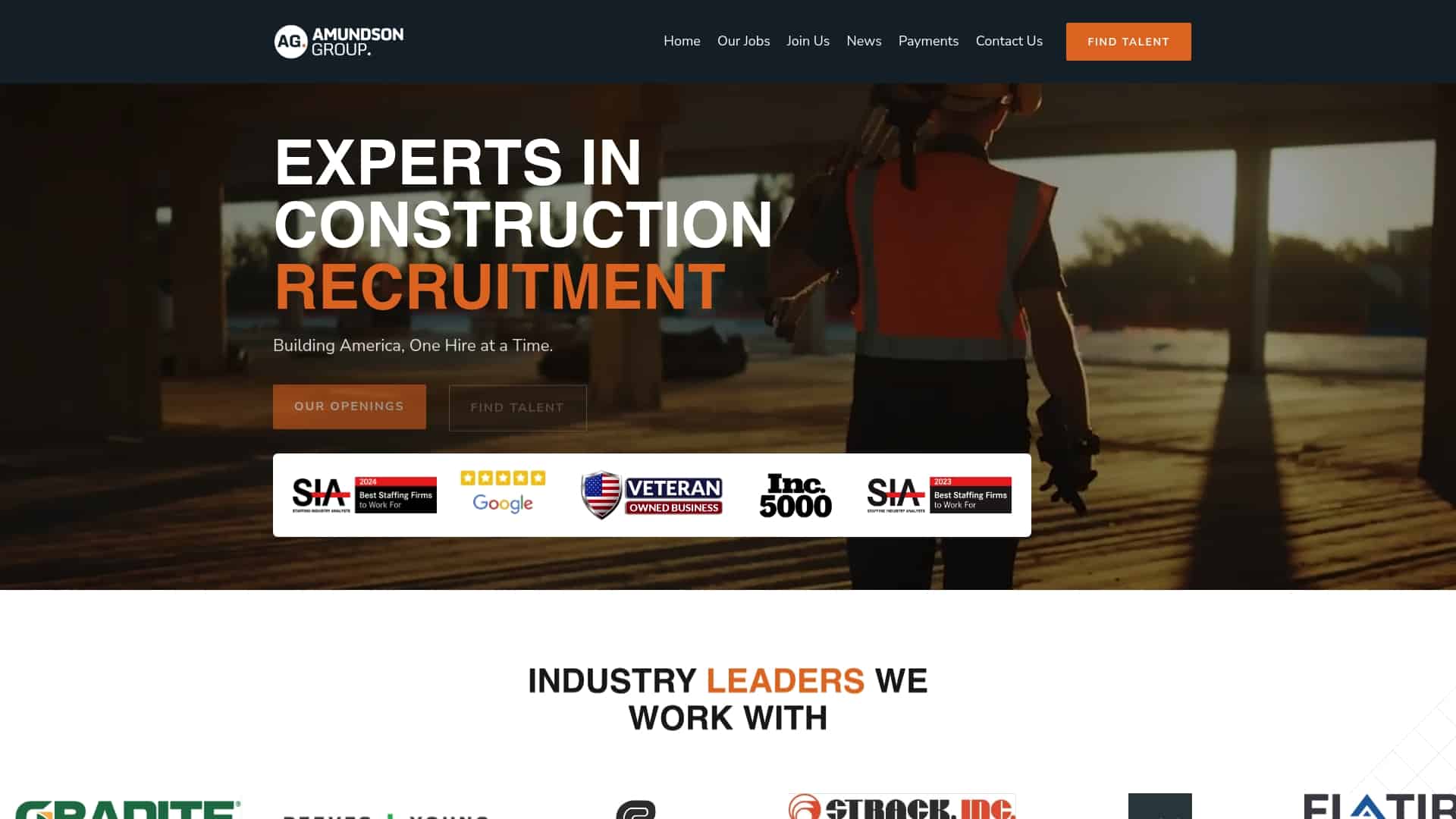The Impact of Employee Retention on Organizational Success
Employee retention directly impacts an organization’s bottom line and operational effectiveness in multiple critical ways. High turnover disrupts business continuity and creates ripple effects throughout the organization that can damage both short and long-term success.
According to research from PeopleThriver, organizations with strong retention rates experience:
- Reduced recruitment and training costs (replacing an employee typically costs 6-9 months of their salary)
- Improved team performance and productivity
- Enhanced workplace culture and employee morale
- Increased profitability and customer satisfaction
- Greater institutional knowledge preservation
Lost productivity from turnover costs U.S. businesses an estimated $1.8 trillion annually. Beyond financial impacts, high retention creates stability that allows for consistent service delivery and stronger customer relationships.
Chris Estrada, CEO of Nationwide United Auto Transport, notes that losing key employees results in “lost workflow knowledge, decreased productivity, and lower morale until a replacement is found.” The recruitment process itself, often taking 1-4 months, places additional strain on existing staff.
Implementing effective employee retention strategies isn’t just about preventing departures—it’s about cultivating a work environment where talent thrives and contributes to organizational growth. However, retention efforts should focus on engaging high-performing employees rather than simply reducing turnover figures.
Key Takeaways
| Takeaway | Explanation |
|---|---|
| Employee retention is crucial for success | High turnover disrupts operations and results in significant costs for businesses, emphasizing the importance of creating a stable workforce. |
| Culture is a primary driver of retention | Toxic workplace culture is ten times more impactful than inadequate pay in driving employee turnover, highlighting the need to address cultural issues. |
| Focus on employee engagement | Strategies that enhance employee engagement and development lead to higher retention rates, suggesting retention efforts should prioritize these areas. |
| Regular assessment is essential | Organizations should assess retention challenges using exit interviews and surveys to identify specific areas for improvement. |

Identifying Core Challenges Behind Employee Turnover
Before implementing retention strategies, organizations must accurately diagnose why employees leave. Research reveals that workplace culture issues outweigh compensation concerns as primary turnover drivers.
According to research from MIT Sloan Management Review, toxic work culture is the leading cause of employee attrition—ten times more impactful than inadequate pay. This highlights the importance of looking beyond surface-level explanations when addressing retention challenges.
Common factors driving employee turnover include:
- Toxic workplace environments characterized by fear, disrespect, and cutthroat competition
- Limited career advancement opportunities and lack of professional development
- Misalignment between employee skills/interests and job responsibilities
- Inadequate recognition and feedback systems
- Poor work-life balance and inflexible working arrangements
- Insufficient compensation and benefits packages
- Ineffective leadership and management practices
Identifying which factors affect your organization requires systematic assessment through exit interviews, employee surveys, turnover analytics, and regular feedback mechanisms. Pay particular attention to departments or teams with higher turnover rates, as they often reveal localized management or cultural issues.
Many organizations mistakenly focus on improving compensation alone when addressing retention problems. While competitive pay is essential, solving the underlying cultural and management issues that drive employee departures produces more sustainable results and significantly improves workforce retention strategies.
Proven Strategies to Increase Employee Retention
Implementing effective retention strategies requires a multi-faceted approach addressing the core reasons employees leave. Organizations that successfully retain top talent typically employ several of these proven tactics.
According to research from Sparkbay, while salary matters, it’s rarely the primary driver of retention decisions. Their data shows 94% of employees would stay longer at companies that invest in their professional development.
Here are key strategies that deliver measurable results:
- Invest in professional development: Create clear career pathways with regular training opportunities, mentorship programs, and skills enhancement initiatives
- Improve management effectiveness: Train managers in supportive leadership styles, effective feedback delivery, and performance coaching
- Enhance work-life balance: Implement flexible scheduling, remote work options, and policies that respect personal time
- Develop meaningful recognition systems: Establish both formal and informal ways to acknowledge employee contributions
- Create competitive compensation packages: Regularly benchmark salary and benefits against industry standards
- Foster inclusive workplace culture: Build environments where diverse perspectives are valued and psychological safety is prioritized
The Bureau of Labor Statistics reports an average of 3.47 million people quit their jobs monthly in early 2024, highlighting the urgency of implementation. Organizations should begin by addressing their most critical retention challenges based on data from exit interviews and employee feedback.
Most importantly, retention strategies must be authentic and consistently supported by leadership actions. Employees quickly recognize disconnects between stated values and actual workplace practices, which can accelerate departures rather than prevent them.
Cultivating a Positive Workplace Culture for Enhanced Engagement
Workplace culture serves as the foundation for successful employee retention strategies. A positive work environment directly impacts engagement levels, which in turn influences retention rates and overall workforce stability.
According to research from PeopleKeep, 89% of workers experienced burnout in the past year, highlighting how critical workplace culture is to employee wellbeing and retention. Organizations with strong cultures typically blend elements of mentorship, teamwork, structure, and stability.
Key elements that foster a positive workplace culture include:
- Learning mindset: Treating mistakes as growth opportunities rather than failures
- Open communication: Establishing transparent information flow across all organizational levels
- Mutual support: Creating systems where colleagues actively help each other succeed
- Accessible leadership: Ensuring managers remain approachable and responsive to concerns
- Trust and empowerment: Giving employees appropriate autonomy over their work
- Collaborative decision-making: Involving team members in processes that affect their work
Positive workplace cultures encourage employees to feel welcomed, appreciated, supported, and inspired. In contrast, toxic environments characterized by disrespect, lack of recognition, poor relationships, and burnout drive high turnover rates.
Implementing culture improvement requires consistent, visible commitment from leadership. Start by evaluating your current culture through anonymous surveys, focus groups, and turnover analytics. Then develop specific, measurable initiatives that address identified weaknesses while building on existing strengths. Regularly reassess progress using engagement metrics and adjust approaches as needed to maintain momentum in your workforce retention strategies.
Leveraging Technology and Metrics to Sustain Long-Term Retention
Successful retention strategies require ongoing measurement and adjustment based on reliable data. Organizations that excel at retaining employees typically implement robust systems to track, analyze, and act upon retention-related metrics.
According to research from Gun.io, companies that systematically approach retention can achieve remarkable results. Gun.io maintained approximately 90% employee retention over two years in a turbulent hiring market, compared to an industry average of just 35.8%.
Key technologies and metrics to implement include:
- HR analytics platforms: Tools that track retention rates, turnover costs, and identify at-risk employees
- Employee feedback systems: Regular pulse surveys and sentiment analysis tools to measure engagement
- Performance management software: Systems that facilitate regular feedback and transparent goal-setting
- Learning management systems: Platforms that support personalized development and skill building
- Compensation analysis tools: Software to ensure pay equity and market competitiveness
Beyond implementing technology, organizations should establish clear metrics to evaluate retention strategy effectiveness. Essential measurements include overall retention rate, departmental retention variations, turnover costs, time-to-fill positions, and engagement scores.
The most successful organizations track both leading indicators (metrics that predict future retention problems) and lagging indicators (metrics that confirm past retention performance). This comprehensive approach enables proactive intervention before employees decide to leave.
Faith, Director of Growth Marketing at Gun.io, emphasizes that “thinking ahead six or twelve months…makes a huge difference in our ability to coach, manage, and support new hires.” This forward-thinking approach to measurement creates a foundation for sustainable retention improvement.
Frequently Asked Questions
What are the main benefits of improving employee retention?
Improving employee retention directly leads to reduced recruitment and training costs, enhanced team performance and productivity, better workplace culture, increased profitability, and preserved institutional knowledge.
How can organizations identify the reasons behind employee turnover?
Organizations can identify turnover reasons by conducting exit interviews, employing employee surveys, analyzing turnover analytics, and collecting regular feedback from employees. This systematic assessment helps highlight specific challenges and areas for improvement.
What strategies can effectively increase employee retention?
Effective strategies include investing in professional development, improving management effectiveness, enhancing work-life balance, creating meaningful recognition systems, offering competitive compensation packages, and fostering an inclusive workplace culture.
How does workplace culture impact employee retention?
Workplace culture significantly impacts employee retention as a positive environment fosters engagement, support, and collaboration. Conversely, toxic cultures can lead to high turnover rates, emphasizing the need for organizations to address cultural issues actively.
Boost Your Employee Retention with Expert Recruitment Solutions
In today’s competitive construction landscape, the toll of employee turnover can be devastating. As highlighted in “Effective Ways to Increase Employee Retention,” a toxic workplace culture and inadequate recognition can drive even the most dedicated professionals away. Companies are often left grappling with the financial burdens of rehiring and training new talent—a daunting challenge that every organization seeks to avoid.
At The Amundson Group, we understand the pressing need for construction companies to foster a positive workplace culture and invest in their workforce. Our expertise in construction recruitment means we not only match skilled professionals with job opportunities, but we also ensure that your new hires align with your organization’s values and culture. By leveraging our vast network across heavy civil, commercial, data center, multi-family, wastewater, and site development sectors, you can build a loyal workforce that thrives.

Don’t let turnover disrupt your operations any longer! Connect with us today at Amundson Group to explore our industry-leading talent acquisition solutions. Together, we can enhance your employee engagement and create a workplace where talent not only stays but flourishes!





